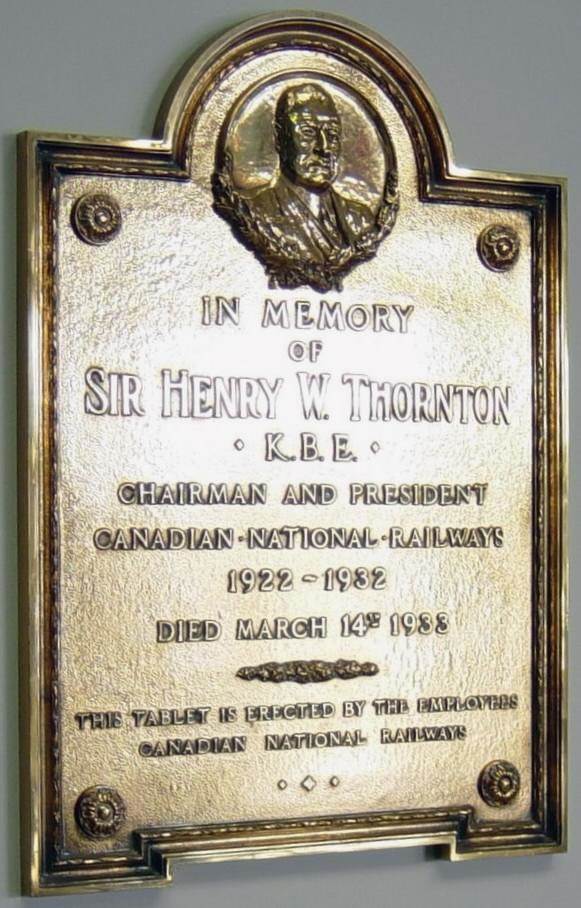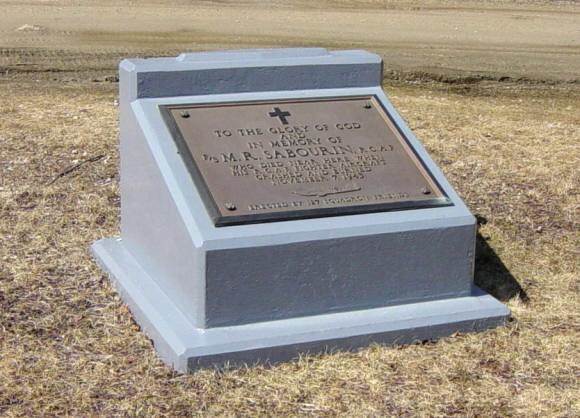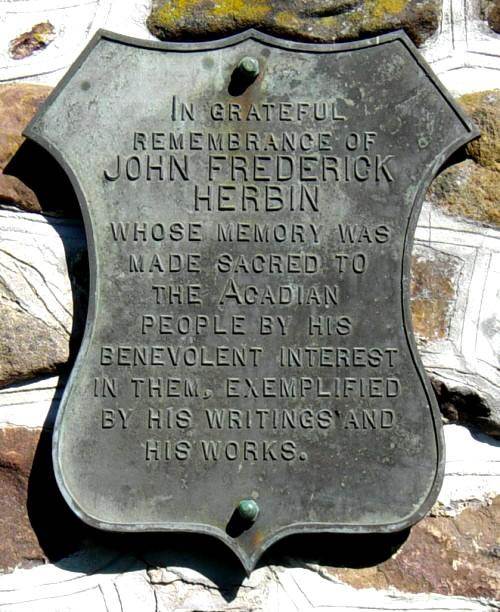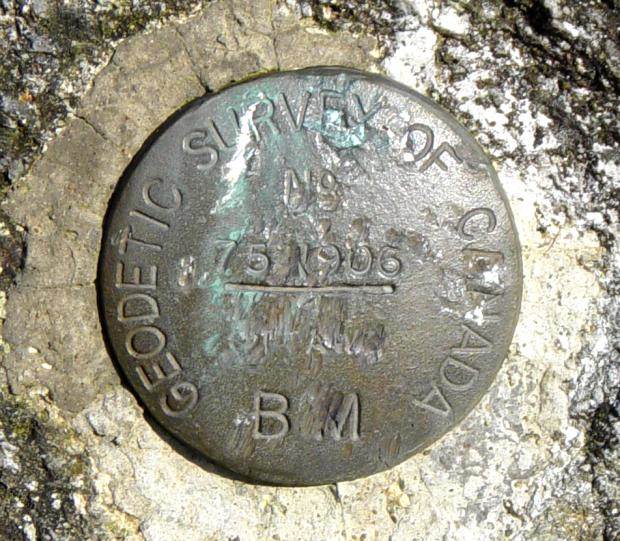
Captain Savalette
1565
Photographs of Plaque
Charlos Cove Guysborough County Nova Scotia
Located on the north side of Highway 316
about 3.1 km eastward from Charlos Cove.
GPS location: 45°15’32″N 61°17’52″W
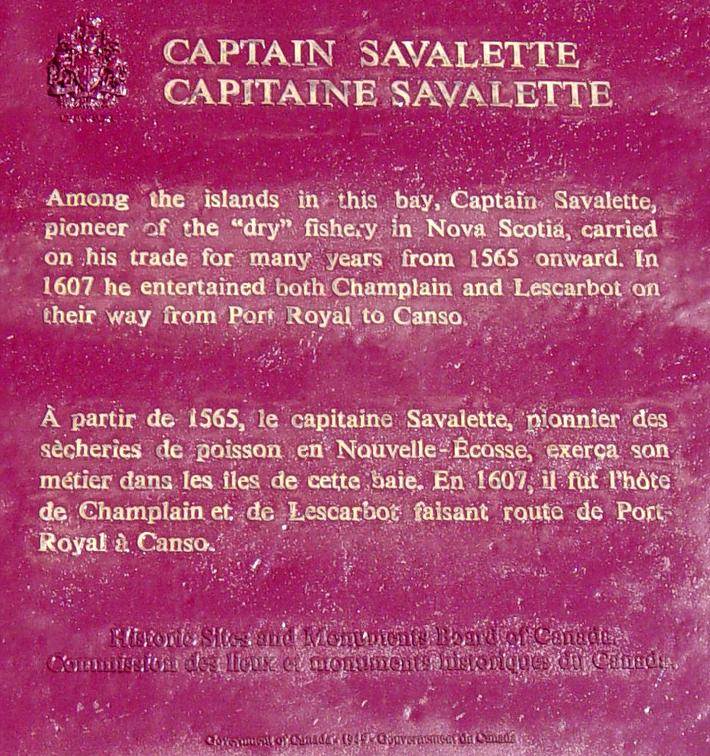

Plaque date 1949
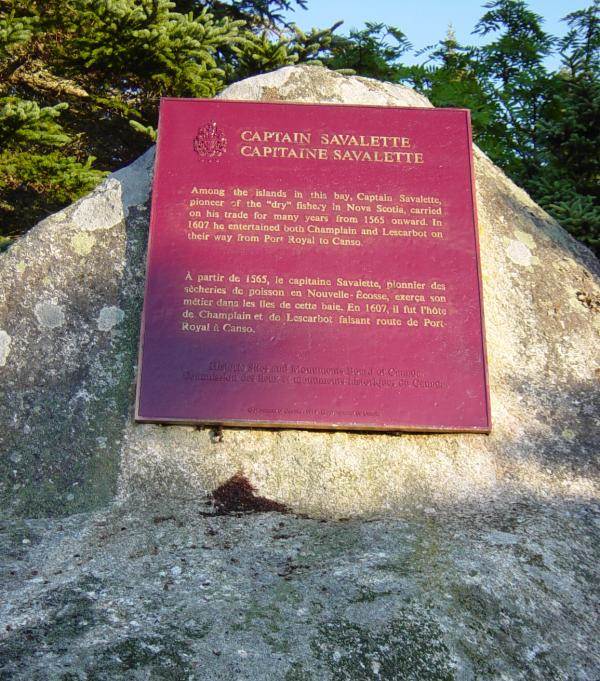
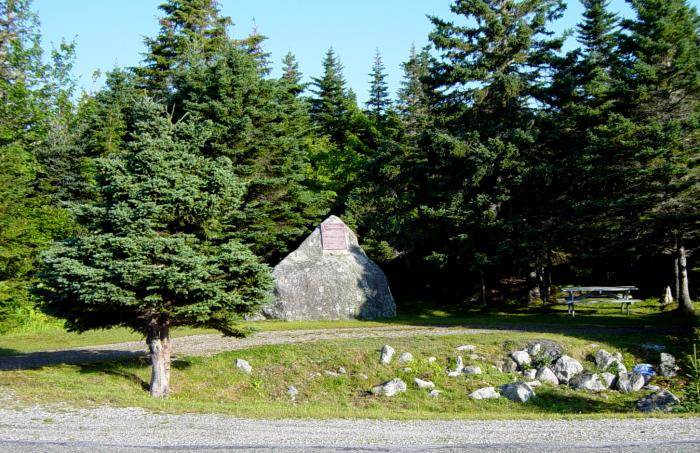
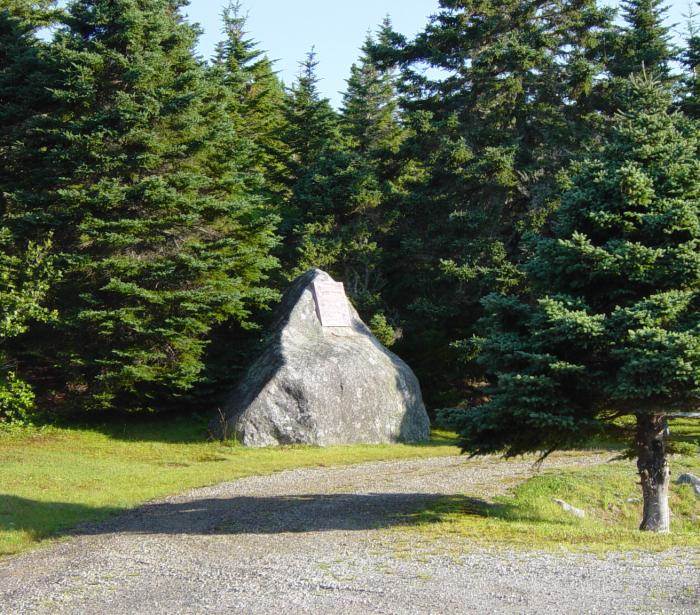
The photographs above and below were taken on 16 August 2005.

Geodetic Survey benchmark, installed in 1906.
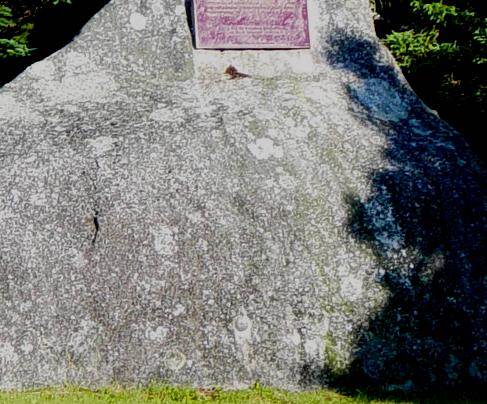
The location of the Geodetic Survey benchmark
can be seen directly below the plaque, near the ground.
It was installed here in 1906, 43 years before the plaque.
Also the following passage from Lescarbot will show how much the neighboring coasts were frequented by Europeans in the sixteenth century. Speaking of his return from Port Royal to France in 1607, he says: “At last, within four leagues of Campseau [the Gut of Canso], we arrived at a harbor [in Nova Scotia], where a worthy old gentleman from St.John de Lus, named Captain Savalet, was fishing, who received us with the utmost courtesy. And as this harbor, which is small, but very good, has no name, Ihave given it on my geographical chart the name of Savalet. [It is on Champlain’s map also.] This worthy man told us that this voyage was the forty-second which he had made to those parts, and yet the Newfoundlanders [Terre neuviers] make only one a year. He was wonderfully content with his fishery, and informed us that he made daily fifty crowns’ worth of cod, and that his voyage would be worth ten thousand francs. He had sixteen men in his employ; and his vessel was of eighty tons, which could carry a hundred thousand dry cod.” (Histoire de la Nouvelle France, 1612.) They dried their fish on the rocks on shore.
Henry David Thoreau in his 1865 book Cape Cod
Cape Cod Appendix B: Historical Notes for Chapter10 (note20)
Alternate spelling Captain Savalet
History of Grassy
…The fishery on the Grand Banks of Newfoundland was called the
“wet” fishery method. This meant catching the fish, then cleaning,
salting, and transfering them to the hold of a ship. Once the hold
was filled, the ship and crew would travel back to their home country
to sell the fish. As time progressed it became very difficult to meet
the large salt requirements of the wet fishery. They eventually had
to rely on other technigues, in particular the “dry” fishing method.
This method required less salt because the fish were dried in the
sun and air. French fishermen tended to use the cobblestoned
beaches to dry their fish, whereas English fishermen built fish
flakes to dry their fish…
http://epe.lac-bac.gc.ca/100/205/301/ic/cdc/archaeology/
second/history/fishery/1600his.html
Cape Cod: Historical Notes for Chapter 10 by Henry David Thoreau
…”At last, within four leagues of Campseau [the Gut of Canso],
we arrived at a harbor [in Nova Scotia], where a worthy old gentleman
from St. John de Lus, named Captain Savalet, was fishing, who
received us with the utmost courtesy. And as this harbor, which
is small, but very good, has no name, I have given it on my
geographical chart the name of Savalet. [It is on Champlain’s
map also.] This worthy man told us that this voyage was the
forty-second which he had made to those parts, and yet the
Newfoundlanders [Terre neuviers] make only one a year.
He was wonderfully content with his fishery, and informed us
that he made daily fifty crowns’ worth of cod, and that his
voyage would be worth ten thousand francs. He had sixteen men
in his employ; and his vessel was of eighty tons, which could
carry a hundred thousand dry cod.” (Histoire de la Nouvelle
France, 1612.) They dried their fish on the rocks on shore…
http://eserver.org/thoreau/capecdab.html
North West Atlantic Exploration in the 15th and 16th Centuries
by Peter Pope
Final Report for the Nova Scotia Department of Tourism and Culture
…We have some specific information about one Basque fishing
master, a Captain Savalet, whom Marc Lescarbot met
(at White Haven?) a few miles from Canso in 1607. Lescarbot
reported: …we arrived within four leagues of Canso, at a harbour
where a fine old sailor from St. Jean de Luz, named Captain Savalet,
was fishing… This worthy man told us that that voyage was his
forty-second to these parts, and one must remember that these
Newfoundlanders make but one [voyage] a year. He was wonderous
content with his fishing, and told us that he caught daily a
good fifty crowns’ worth of cod, and that his voyage was worth
to him ten thousand francs. He had sixteen men in his employ,
and his vessel was of eighty tons’ burden, and able to carry
one hundred thousand dry fish…
http://www.matthew.co.uk/history/exploration2.html
Cape Breton in Transition … Prospects for Tourism
…Canso has a lengthy history. European fishermen were
familiar with the Canso area by the latter part of the 16th century.
Marc Lescarbot, Champlain’s contemporary, met a Basque
fisherman at Whitehaven, near Canso, in 1607. The Basque,
a Captain Savalet, claimed that he had already made 42 voyages
to the area. Lescarbot and his companions encountered other
fishermen there as well, from St. Malo and the Basque region
of France. In addition to their fishing activities, the Basques
also traded for furs with the Mi’kmaq. Savalet himself
mentioned encounters with Native people in the area…
http://fortress.uccb.ns.ca/search/Proc95_10.htm
Tor Bay Acadian Society
La Societe des Acadiens de la Region de Tor Baie
The First Annual Festival Savalette will be held August 4-7, 2005
in Larry’s River, Guysborough County. Captain Savalette was a
fisherman from St. Jean De Luz, France, who used the shores
and islands of Tor Bay to carry out his viable fishery by catching
and drying his fish here during the 1500s and 1600s. He carried
on his trade for many years from 1565 onward. Savalette used
the Sugar Islands near Cole Harbour to prepare his fish for
transport before setting out for France.
It is said that Captain Savalette made forty-two voyages to
these parts and hosted many European fishermen and traders
who stopped by for advice, and more importantly, some rest.
Among the well-known visitors were Samuel de Champlain,
Marc LesCarbot, and Nicholas Denys. Visitors were so well
received and treated by Savalette and his men, that much was
written about their hospitality and knowledge of these dangerous
waters and they provided valuable information that became used
in the mapping of this region. Therefore, Port Savalette, later to
be named Tor Bay, has a rich history of hospitality that can be
traced to the days of Capitaine Savalette, after whom our
Festival has been named.
2005: First Annual Savalette Festival page 17,
Municipality of the District of Guysborough Summer Newsletter 2005
http://www.municipality.guysborough.ns.ca/pdfs/
summernewsletter2005.PDF
2005: First Annual Savalette Festival
by La Societe De La Region Du Tour Baie Acadians
http://www.municipality.guysborough.ns.ca/acadian.htm
Geodetic Survey
Geodetic Survey Division
http://www.geod.nrcan.gc.ca/index_e/index_e.html



